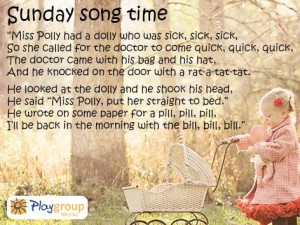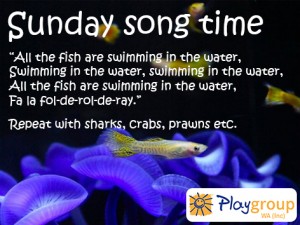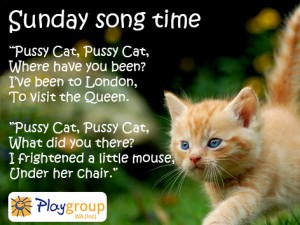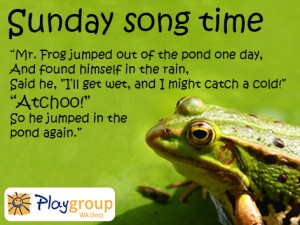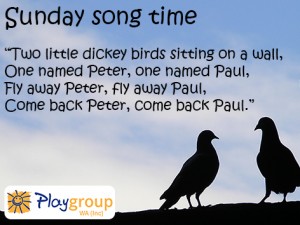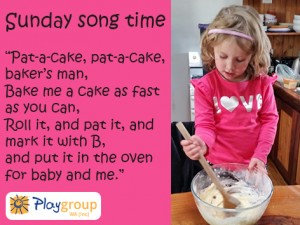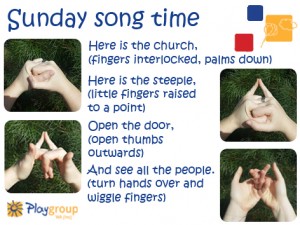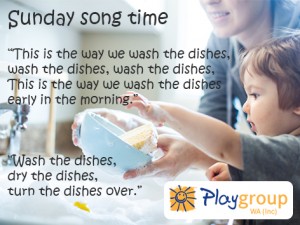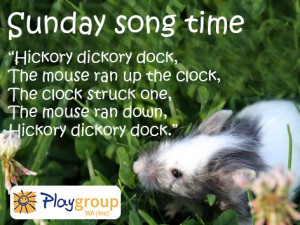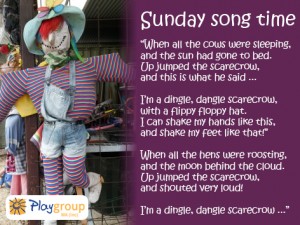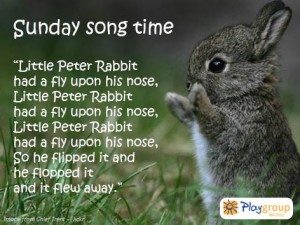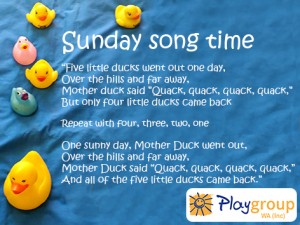Songs & finger rhymes – Toddler
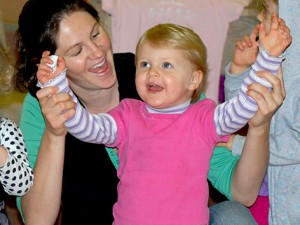 Singing simple songs is a great way to teach new words and phrases.
Singing simple songs is a great way to teach new words and phrases.
Did you know?
The repetitive, rhythmic pattern of nursery rhymes and action songs stimulates imitation, language and memory skills. Children learn through repetition.
Add language
Songs with lots of repetition are easy to learn and remember and allow much opportunity to learn and practice words and concepts. When the words and actions of a song match your toddler learns those words from the repeated association e.g. in “Head shoulders knees and toes” your child is learning those body parts; in “The hokey pokey” your child is learning position words “in” and “out”; and in “Incy wincy spider” your child is learning “up” and “down”.
Watching Playschool can be helpful for parents to remember or learn children’s songs and actions.
Other development
Nursery rhymes help children’s early literacy and numeracy skills. Exploring new words with actions through song helps children build vocabulary and understanding of concepts.
Many children’s songs include number concepts e.g. 5 Little Ducks, 5 Little Monkeys, Baa Baa Black Sheep. For toddlers reduce the number to 3. This is better for their level of concentration and capacity to learn the mathematical concept of “threeness”.
Using a variety of children’s songs gives practice at different skills. Some songs use small finger actions and develop fine motor skills e.g. incy wincy spider; some develop gross motor and balance skills through whole body actions e.g. I’m a Little Teapot, Row Row Row your Boat, Hokey Pokey; and marching and movement songs e.g. The Grand Old Duke of York.
Across the ages
All the activities listed on our “Play Ideas” page can be applied across different age groups. Check out songs and finger rhymes for babies, children and playgroups.
Activities listed under “toddler” are suitable for children aged 1-3 years. Toddlers enjoy activities that include exploring their environment and finding out how things work.


